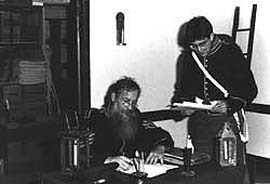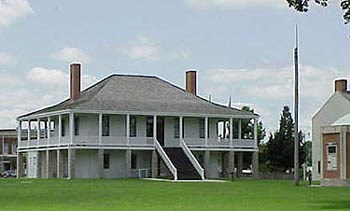
The Quartermaster Department was organized in 1775, when the Continental Congress authorized a Quartermaster General and a deputy to serve the Army. The first Quartermaster General was Major Thomas Mifflin of Pennsylvania, who was appointed by General Washington. Until 1818, however, the measures introduced by the Quartermaster Department were temporary and usually limited to wartime. Following the War of 1812, the Secretary of War obtained permission to reorganize the Army, and one of his acts was to establish a permanent Quartermaster General with a department in Washington. Brigadier General Thomas Sidney Jesup was selected to head the new bureau, which he guided until his death in 1860. (It was not until 1862 that retirement became available and not until 1882 that it was required.) Jesup was a wise choice, and he brought discipline and enthusiastic energy to his office. He needed both. His staff consisted of two Assistant Quartermasters with the rank of major, and twenty-eight Assistant Quartermaster with the rank of captain each receiving compensation varying from $10 the $20 a month, as the /secretary of War, Jesup had only six permanent clerks to maintain the office letter books, ledgers, etc. The number of items for which the department accounted, as well as the amount of contracts it let, are staggering. Yet the Quartermaster Department did it and did it well. Like the rest of the Army, the Quartermaster Department suffered from either feast or famine. In times of war, it added staff and was given funds needed badly; in peacetime, however, appropriations drastically reduced the work the Quartermaster General deemed necessary. In the interim between the wars in Florida and Mexico, the budget of the army was extremely tight. In the fiscal year of 1844, only by the order of the Secretary of War were the Quartermasters at Philadelphia and New Orleans permitted to subscribe to one newspaper so that they might obtain shipping lists and current prices, knowledge of which was essential to the execution of their duties. The Washington office was allowed none-not even the newspaper that published the laws-and the Quartermaster General was forced to request that the Quartermaster at Philadelphia forward his newspaper to him, "when you have done with it." Under such circumstances, construction periodically came to a virtual standstill. The stringent measures resulted in deteriorating buildings, and quartermasters were forced to rely almost entirely upon the soldiers for labor. When skilled labor was not available from the soldiers, the quartermaster was authorized to hire civilians who were specialized tradesmen, which included masons, turners, glaziers, and millwrights. 
Reductions in the Army did not necessarily lessen the demands on the Quartermaster Department. Westward expansion necessitated new fortifications and abandonment of old ones that were no longer needed. Roads and bridges had to be built to connect these new bases and to provide supply lines. Economy may have been the watchword, but surviving Army structures from the 1840s including those at Fort Scott and Fort Laramie, indicate the Quartermasters planned graceful as well as practical buildings. Long porches offered shelter from the torrid summers of the plains; large windows let in air and sunlight; and plastered walls and graceful stairways and fireplaces reminded families of officers that they were not away from home entirely. Except for the kitchen wings, Bedlam, built at Fort Laramie in 1849, is eerily similar to the officers' quarters constructed at Fort Scott a few years earlier. Later posts of the Indian War period did not always have housing as fine as that of the pre-Civil War period. The majority of the Assistant Quartermasters were graduates of the Military Academy, where they had received training in both architecture and engineering, disciplines they would need. Because of the wide range of objects under their jurisdiction and the opportunities for theft, Quartermasters were chosen for their honesty and kept strictly accountable for everything they ordered. By the outbreak of the Civil War, the Quartermaster Department had 53 separate forms to be filled out, inventorying everything from stationery to the number of days an enlisted man was mustered for extra-duty. So meticulous was Jesup that even the sale of a condemned horse was brought to his attention and received on paper the notation in his own hand, "let the horse be sold." The information for this section was taken from the Historic Furnishings Report for the Quartermaster Storehouse at Fort Scott by Sally Johnson Ketcham.
|
Last updated: July 29, 2016

